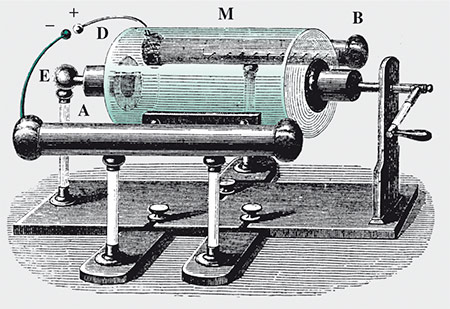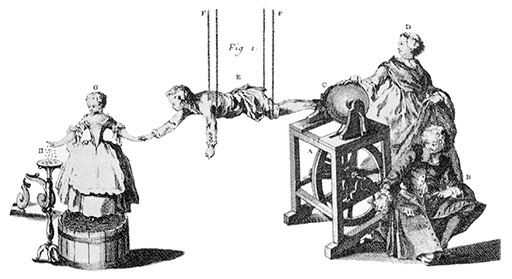5.1 Electrical beginnings
In eighteenth and nineteenth century Europe, scientific enquiry was considered a worthwhile pastime for the nobility and the landed gentry (who tended to have the time to indulge in pursuing their curiosity). It was during this period that serious investigation into electricity began.
The study of electricity had a somewhat protracted infancy. Back in the sixth century BC Thales recorded some curious effects associated with amber, the fossilised resin. When rubbed with silk or with cat fur, amber acquired the ability to attract tiny seeds, feathers, and particles of dust. It was not until the enquiries of William Gilbert in the late sixteenth century that it was established that there were many other substances that could, when rubbed, produce a similar effect.
Thales
Thales (pronounced 'thay-leez') was a Greek philosopher of the Ionic School (seventh century BC). According to Thales:
The original principle of all things is water, from which everything proceeds and into which everything is resolved.
This particular view has not stood the test of time. However, Thales' observations on the curious attractive properties of ancient resin when rubbed with silk are themselves preserved in all things electrical, as the word 'electron' is derived from the Greek word for amber.
William Gilbert
William Gilbert (1544–1603) was physician to Queen Elizabeth I. At the end of the sixteenth century his curiosity led him to discover that, when rubbed, sulphur, wax, glass and many other substances behaved in the same way as amber, in that they could begin to attract small particles of dust, etc. Today we attribute these effects to 'static electricity'. It is said to be 'static' because most of the effects arise from the presence of electrical charges, rather than their motion. Gilbert was equally fascinated by lodestone, a mineral that retains what we now know as magnetism.
In fact, Gilbert described how to detect 'frictional electricity' by means of 'an iron needle moving freely on a point'. It is easy to imagine how magnetism must have frustrated his early work – iron was the worst material he could have chosen, because electricity can actually cause it to become magnetic. Even so, in time he was able to distinguish electricity from magnetism and he was wise enough to leave open the possibility that these effects were nevertheless closely related. How right he was, though it was over 250 years later that the links were firmly established.
During the eighteenth century the first fruits of electrical engineering became available; see Figure 77. These were machines that generated electricity by winding handles that in turn rubbed disks or cylinders of glass on fixed cushions of silk or leather. Combs of metal 'swept up' the electricity and transferred it to metal rods and spheres, from which sparks could be made to fly. For those with the time and funds to be curious, these machines must have proved tremendously fascinating.

There were so many things to find out about electricity. Why for instance, did the weather have such a profound influence on the effectiveness of the above machines? Figure 78 shows an example of even more ambitious research into the effects of electrifying boys!

